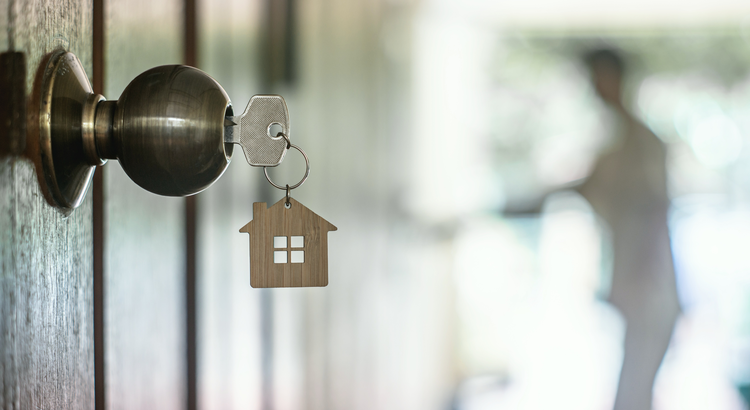There are many things to consider when purchasing a home, but one item on current homebuyers’ checklists is sustainability. Traditionally, homebuyers consider acreage, square footage, original features, recent upgrades, roof age, and more. All of these still factor in, but almost all of them can be viewed through a lens of sustainability. For homeowners, sustainability in the home means clean air & environment, energy efficiency, and a low carbon footprint – all of which lead to reduced costs and a healthier environment inside the home and the surrounding community.
As millennials now take up the largest demographic of homebuyers, they not only prefer open concept, neutral palettes, minimalism, and stainless steel, but millennial homebuyers are also interested in features that can support a sustainable lifestyle. But it’s not only millennials looking to incorporate green features into their homes. The U.S. Green Building Council reports that LEED-certified homes sell faster and for higher price tags than comparable homes without the certification. Whether you are preparing to list or on the hunt, consider the following ideas to increase a home’s sustainability.
Location
Where you live affects your health. And likewise, where and how neighborhoods are built, affects the environment and surrounding ecosystem. With respect to this symbiotic relationship, location impacts sustainability efforts in big ways.
-
Purchase a home in one of the communities participating in the New York State program Climate Smart Communities. This program seeks to “help local governments take action to reduce greenhouse gas emissions and adapt to a changing climate.” There are several towns and villages on this list with homes for sale, and the team at Sharon Quataert Realty would be more than happy to assist you in the home-buying process.
-
Living in a high-density area allows for access to public transportation, shorter commutes, walking, or biking. Resources, people, products, and utilities in closer proximity mean they have less distance to travel, thus lowering the overall carbon footprint.
-
Look for neighborhoods that allow residents to grow wildlife gardens or native landscaping alternatives to grass. The National Wildlife Federation has found that these types of lots support biodiversity, which promotes resiliency in the ecosystem.
Materials
In terms of sustainability, it’s almost always better for the environment to buy an already existing home. If you are purchasing a new-to-you home, look for homes that were built to last, with durable materials that require few modifications or updates.
-
Look into restoration before replacement. Even old glass-paned windows can be beautifully restored with a few tools, some guidance (YouTube!), and a bit of confidence.
-
Follow environmental safety guidelines (or hire certified professionals) and use proper tools (like HEPA vacuum filters) for lead paint, mold, old tiles, and any other potentially harmful materials.
-
Replace with sustainable materials – shop stores like ReHouse Architectural Salvage, Habitat for Humanity ReStore, or Historic Houseparts for reclaimed hardware, cabinetry, and flooring or purchase products made from renewable or recycled materials
If you build a new home, there are so many green building options on the market. From zero net-energy custom builds to tiny homes to Earthships, the sustainability variations and possibilities are nearly endless.
-
Use quality renewable or reclaimed materials as much as possible. The more effort spent in using sustainable building materials, the less new lumber, plastics, metals, and other raw materials you consume.
-
Square footage should meet, not exceed your needs. The size of your build will impact the amount of resources required to build it, but also the amount of energy you will consume to run electricity, heat, etc.
Lot
Lot size and landscaping features can have a major impact on your home’s sustainability and environmental impact.
-
Thoughtfully placed trees can provide “passive” heating and cooling. By shading a home from direct sun, heat buildup can be prevented and your HVAC system will use less energy.
-
Consider hardscaping using renewable materials and native, drought-resistant plants & trees that use less water and fuel for mowing, and provides more biodiversity.
-
Ensure your lot is properly graded to prevent water damage and all related repairs.
Energy Efficiency
When purchasing a home, whether used or newly built, your home inspector can give you a good idea about how well-insulated the home is, the condition of the windows, roof, attic, HVAC, and more, and how those conditions will impact your energy consumption. Take it further by hiring a professional energy auditor who will identify leaks and any other problem areas.
-
Replace old appliances with Energy Star-certified appliances. Be sure to recycle the old appliances with a reputable recycling program.
-
Insulation in attics, crawlspaces, and walls should be upgraded to meet current standards. Doing so will keep your home comfortable in all seasons, and lower your energy needs as well as your heating/cooling bill.
-
Replace your old thermostat with a programmable smart thermostat. Better yet, heat or cool your home using multi-zone controls.
-
Consider the placement and quality of windows. Modern windows can provide great insulation, but replacing windows can be costly. For budget fixes, repair draft causing leaks with caulk, replace broken panes, and invest in energy-certified window treatments. Vinyl windows are not as DIY-able, but they often come with a warranty for replacement if the seal fails.
-
Replace all light bulbs with LED bulbs.
-
Adjust the water heater to a lower maximum temperature. This is especially important if you have small children in the home.
Water Efficiency
Save some for the fish! Water conservation is a key aspect of sustainability efforts. There are now plenty of appliances and features for homes that help with water efficiency, so you can be doing more than just turning off the faucet when brushing your teeth.
-
Replace old showerheads, faucets, toilets, outdoor hoses, washing machines, and dishwashers with low-flow versions.
-
Have your home inspector check pipes for leaks and signs of water damage or moisture build-up.
Air Quality
The quality of air inside your home impacts your health significantly. Not only that, the quality of the materials you bring into your home, or use on the outside of your home, has an impact on
the environment. Often, energy efficiency and air quality go hand-in-hand. The more sustainable practices you employ, along with greener materials, the healthier your air quality will be.
-
Your home inspector will take a look at air filters, vents, exhaust fans, range hoods, and chimneys to ensure they are up to buying standards and provide any insight into inspection/cleaning dates, need for replacement, etc. These should all be clean and working to their highest efficacy and efficiency to keep your home air healthy.
-
Use a dehumidifier to control air moisture and prevent the growth of mold and mildew.
-
Choose paints and other building materials that do not release VOCs (volatile organic compounds) into the air. Many newer furniture and rugs contain VOCs, so be mindful of this when furnishing your new home. You can off-gas these items before bringing them inside, but still not ideal.
Invest for the Future
There are now more technologies available that provide outstanding energy efficiency. These larger investments can, in many cases, lead to completely offsetting your home’s carbon footprint and huge savings in the future.
-
Geothermal heating and cooling, also known as heat pumps, are newly available for residential use. These pumps transfer thermal energy to cool the air in your home in warmer months and warm the indoor air in winter.
-
Install solar panels.
-
Use a gray water system to recycle non-potable water.
-
Use rain barrels to water your gardens.
It’s important to note that more often than not, many of these more sustainable home options can cost a considerable amount of money. Some are huge investments beyond the initial costs of a new home. You may even feel that investing in these changes is out of reach. But there are so many resources and incentives available from New York State, Monroe County, and many of the individual towns in the Greater Rochester area.
Finance Improvements with an FHA-Insured Mortgage
The Energy Efficiency Mortgage (EEM) program through Energy Star helps offset the cost of energy-efficient improvements for a new home purchase, sale, remodel or refinance.
NYS Renewable Technology Programs & Incentives
Check out this list from NYSERDA for renewable technology programs and incentives in your area of New York.
The Inflation Reduction Act
A federal program that makes green upgrades more cost-effective, especially for low-to-moderate-income households. Incentives for energy-efficient upgrades total up to $14,000 of savings per household. The Hope for Homes program provides up to $8,000 in rebates for homeowners who decarbonize their homes with energy efficiency from upgrades.
By considering sustainability when searching for a home, you can create a healthy environment for your family and community. The U.S. Green Building Council released a comprehensive guide to green, sustainable homes in 2019. The LEED v4.1 Residential guide reviews a thorough list of practices to create the sustainable home of anyone’s dreams. But do not feel that you need to make all of these changes right away. Many can be done before moving in, or your realtor at Sharon Quataert Realty can help you negotiate with sellers to make the upgrades before you close. You can always start small, making gradual upgrades year by year. You’ll be increasing your home’s value as you go!






